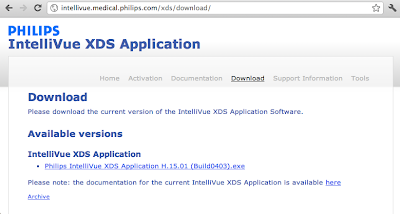[Editor's note: Jeremy Epstein with our colleagues at the Freedom to Tinker blog is our Secure-Medicine.org guest blogger this week. Below we syndicate his recent posting about
"Going to the doctor and worrying about cybersecurity." Jeremy is a
Senior Computer Scientist at SRI International. ]
For most people, going to the doctor means thinking about co-pays and when they’ll feel better. For me though, it means thinking about those plus the cyber security of the computer systems being used by the medical professionals.
I’ve spent more time than usual visiting doctors recently. I broke my hand – sure I’ll tell you how. It was a hit-and-run accident with a woodchuck. I was riding my bike, the woodchuck ran in front of me, I ran over him, and he fled into the woods, leaving me lying on the ground moaning in pain. Okay now that we got that out of the way…
So the emergency room doctor ordered a CT scan (to check for a concussion and the presence of a brain) and various x-rays. I thought about the computer controls while in the CT scanner, but what was really interesting was when the hospital emergency room digitized the results and gave them me on a CD to provide to the orthopedist.
Before going to the orthopedist, they had me fill out a bunch of forms online. As I provided the detailed medical information, I wondered how secure the web interface is, and whether someone could attack the medical record system through the patient input interface.
When I got to the orthopedist’s office a few days later, I gave the receptionist the CD, which she promptly read into the medical records computer and returned to me. It occurred to me that the risk taken in reading a CD or other media from an unknown source is pretty substantial, something we’ve known in the security world for decades but has not filtered well into other fields. On the other hand, every time I’m on a conference program committee I open PDFs from people I may never have heard of, so it’s not as if I’m immune from this risk myself.
When I got home, I read the CD on my Mac laptop, and discovered that it has an autorun.INF file to start the application that reads the x-ray data files. I don’t know whether the doctor’s office disables AutoRun on their computers; undoubtedly some doctors do and others don’t.
And even if the doctors’ computers have disabled AutoRun and don’t use the software on the CD to view the test results, how secure are they against data-driven attacks, such as we saw a number of years ago against JPEG files in browsers?
So given this experience, how would I use the information if I were a bad guy? Patient-provided removable media are a part of the attack surface that may not have been considered. If the security model assumes that the media is coming from a trustworthy source, there needs to be a way to validate that trust. Relying on a imprint on the media is not much of a protection. Creating a CD with a legitimate looking imprint from a hospital isn’t hard; and if I didn’t know what an imprint looked like, I would make one up and put address in a state or country far enough away that it’s unlikely it ever would’ve been seen before by the doctors office staff. Next, the attacker needs to make an appointment with a doctor who is inclined to read data off a CD. In addition to orthopedists, that probably includes many other specialties such as oncologists and cardiologists given an appropriate explanation of what the data is. Finally, the attacker needs to create appropriate malware. But that’s easier than a web attack against a medical application, since they’re going to run whatever program is put on the disk, and there’s no need to find new vulnerabilities.
But that begs the question, why would someone bother? I’m not really sure, but blackmail, identity theft, or just kicks from knowing that you could seem like possible motivations. Then again, I doubt many of us could have predicted the varied motivations that exist for malware on the web today.
I (obviously) didn’t infect my doctor’s computers with malware, however tempting the thought may be, especially after I got the bill. But the lesson learned for me was that attack surfaces show up in the most unanticipated places.
[Postscript: Thanks to David J for pointing out several typos which have been corrected. The side effect of being a novice at using speech-to-text, thanks to the above-cited broken hand!]










